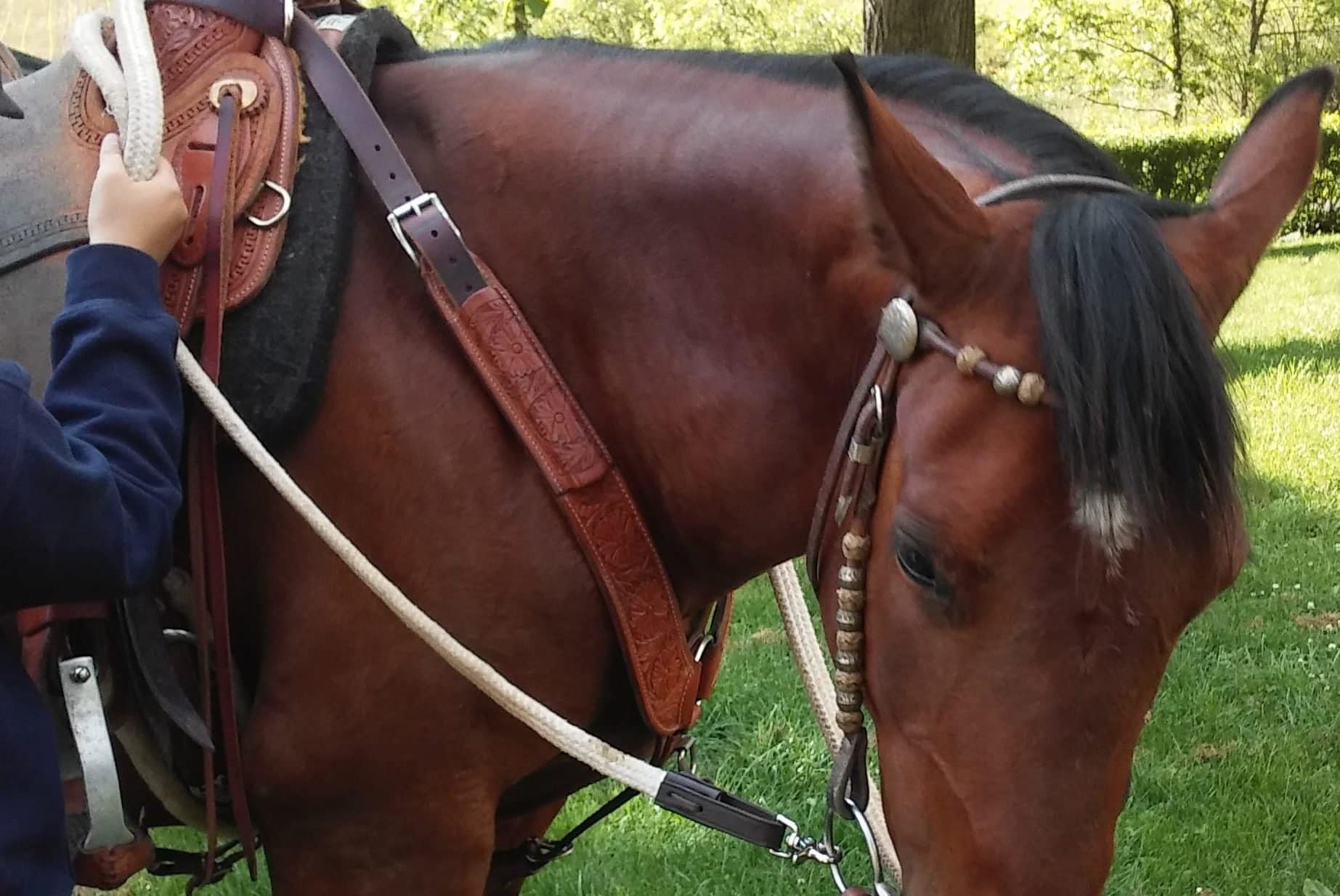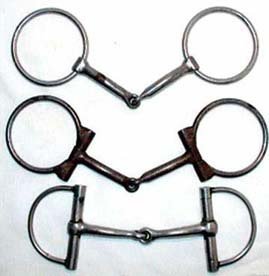

The pulling collar is popular among working ranchers and ropers as a practical tack choice. The have also been gaining popularity along with AQHA’s new ranch horse pleasure class as a style choice, emulating the style of working ranchers. So, what is a pulling collar and how does it differ from your average breast collar?
Similarities Between Breast Collars and Pulling Collars
Breast collars and pulling collars are both designed to keep your saddle from sliding too far back on the horse. They also help keep the saddle from sliding side to side when navigating tight turns at a high rate of speed. They both have three pieces. Two straps attach to the saddle and a metal ring holds them together in the center. A third, often thinner, strap goes between the legs to the girth.
Related Content: Battling Show Ring Burnout
Differences Between Breast Collars and Pulling Collars
Breast collars cross a horse’s chest from side-to-side. This can cause problems when riding on rough trails or doing ranch work. Many breast collars end up binding on the point of the horse’s shoulder, restricting his range of motion and limiting his gaits.
A pulling collar sits just above the line of a horse’s shoulders and buckles around the pommel of the saddle. This allows the horse more freedom of shoulder movement and better leverage when roping and pulling cows, doing ranch work, and navigating treacherous terrain.
Breast collars fasten on the d-rings on the saddle, while pulling collars fasten directly onto the pommel of the saddle for more secure and stabilizing fit.
[clickToTweet tweet=”Many western breast collars end up binding on the point of the horse’s shoulder. #horsetraining #247equestrian” quote=”Many western breast collars end up binding on the point of the horse’s shoulder. “]
Uses for a Pulling Collar
Pulling collars are a growing trend in the western show pen, particularly in the ranch horse classes because that is what a lot of working ranch horses use. If you are not actually dragging a calf or roping a steer, you probably don’t actually need one.
I use one because Moose is a princess about tack fit. I made the mistake of letting her try it once. Now she refuses to use a regular breast collar because, apparently, they are beneath her. She thinks she’s a real cow horse…sans cows…not quite sure how that works, but I’ve learned to pick my battles. She loves extreme mountain trail riding. It’s good to give your horse as much range of motion as possible on dangerous trails. That’s how I justified the expense when my wallet complained too loudly. So in all my photos of Moose (including the cover photo of this article) you will see her in her pulling collar instead of a regular breast collar.










Now I understand the distinction between the two. That is essentially what a horse breast collar is and what it is used for. Thank you for making this information available. Which brands, by the way, do you believe are the best? Based on my experience, I believe the ones from https://ropingsupply.com/collections/breast-collar-and-trippin-collars are excellent.
I’ve seen some online at Pleasant Ridge – they are the thinner tripping collars, however it’s a start. I’m going to be trying to make my own, I’m just trying to figure out the measurements
Thanks. Honestly I didn’t know anything technical about a horse breast collar. I just bough and bought them from https://ropingsupply.com/collections/breast-collar-and-trippin-collars without really considering the functionalities. Now, thanks to your blog, I more or less know what to get for my horses.
Great information. I need to control the horse and have good and safe riding. I was able to try this breast collar it is a great product. I was able to see it at this site. https://ropingsupply.com/collections/breast-collar-and-trippin-collars
Good read! I am trying to find the proper tack for my little mule and a pull collar is very hard to find in southern Ontario.